
Junagarh Fort, one of the most impressive forts of Northern India
Junagarh Fort was built by Raja Rai Singhji, who ruled Bikaner from 1571 to 1612 AD. The fort was originally known Chintamani and was renamed to Junagarh (Old Fort) in the early 20th century when the ruling family moved to Lalgarh Palace.

External Facade
The wall outside Daulat Pol has the hand prints of women who committed sati after their husbands died in battle while defending the fort from the enemy forces. Rajput women preferred death to dishonor and sati was a common practice before it was banned in 1929. Even today, locals place flowers and other offerings below the hand prints.
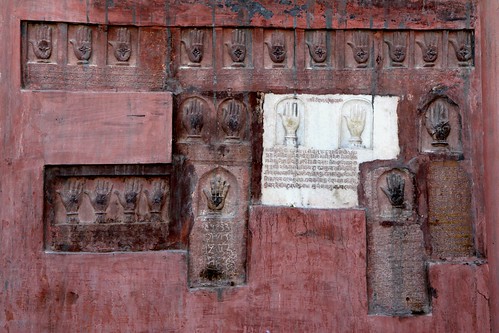
Sati hand prints outside the main entrance
Junagarh is one of the few forts in Rajasthan which is not built on a hilltop.
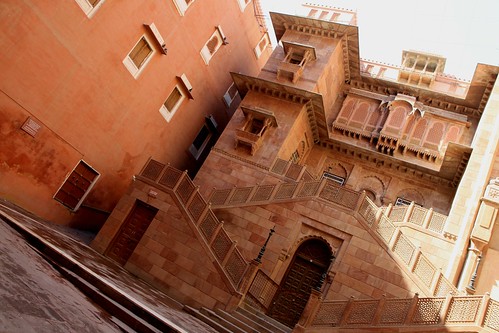
Vikram Vilas
Karan Mahal Chowk
Karan Mahal was conceived by Raja Karan Singhji and erected as a Public Audience Hall by Maharaja Anup Singhji as a monument in his father’s memory.
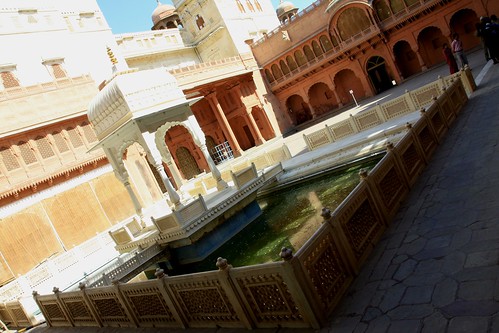
Karan Mahal Chowk
The architecture has a strong Mughal influence especially in the use of white marble and stucco designs.
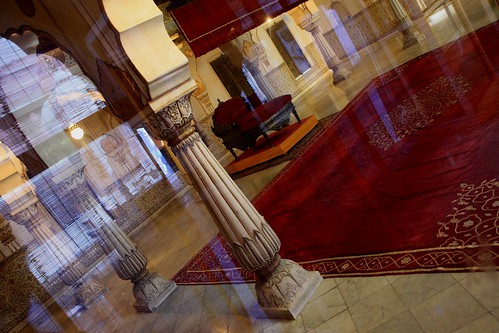
Karan Mahal
Anup Mahal
This multi storey building functioned as the administrative headquarters.

Anup Mahal
The ornate wooden ceilings are inlaid with Italian tiles and mirrors.

Ceiling, Anup Mahal
Badal Mahal
This Mahal, an extension of Anup Mahal, has frescos on the walls and ceilings depicting Lord Krishna and his consort Radha amidst the rain clouds.
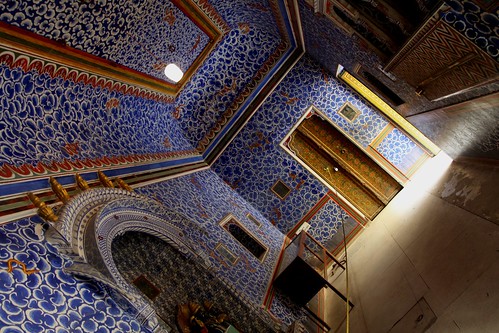
Badal Mahal
Gaj Mandar
This served as the private apartment of Maharaja Gaj Singhji and of his two queens, Phul Kanwar and Chand Kanwar.
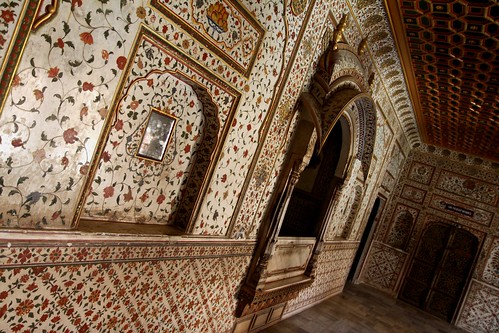
Gaj Mandar
This was built by an architect who was personally summoned from Jaipur by the Maharaja.
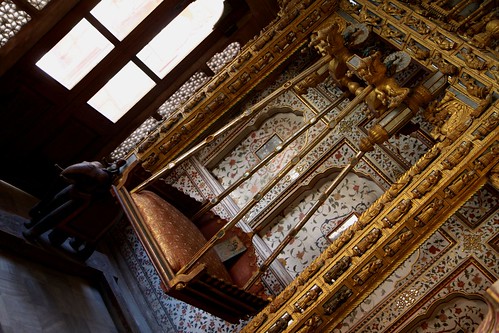
Gaj Mandar
Sujan Mahal
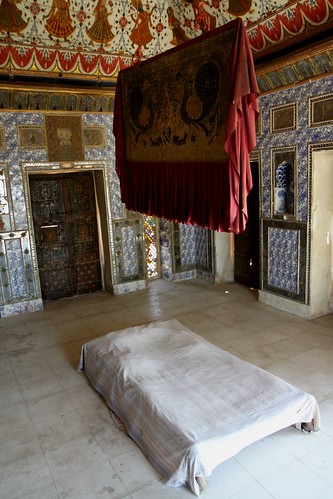
Sujan Mahal
Roof

View from the Roof
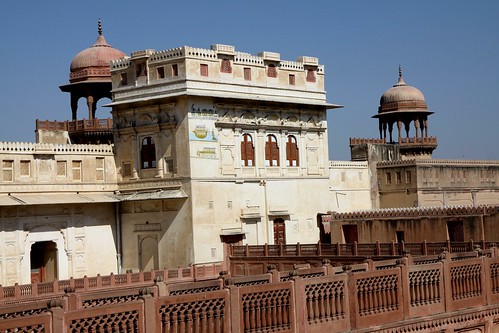
Roof
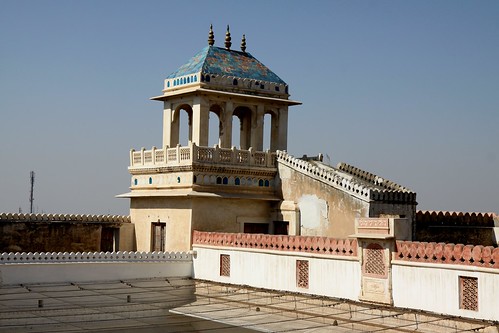
Roof
Dungar Nivas
This palace was named after Maharaja Dungar Singh, who is widely regarded as the architect of modern Bikaner.
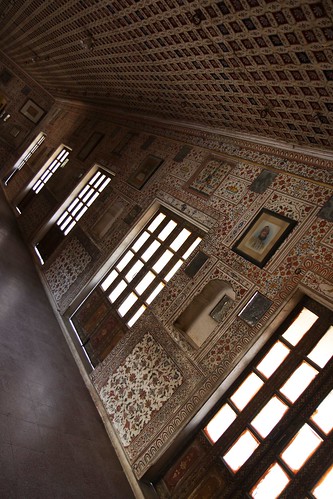
Dungar Nivas
When the 19th ruler of Bikaner, Maharaja Sardar Singh, died without an heir, his widow adopted Dungar Singh, son of Lall Singh.
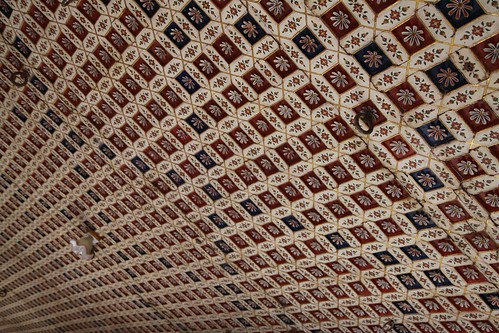
Ceiling, Dungar Nivas
Maharaja Dungar Singh is known for the reforms he introduced during his reign including division of the state into districts for easier adminstration, and introduction of electricity in Bikaner in 1886.
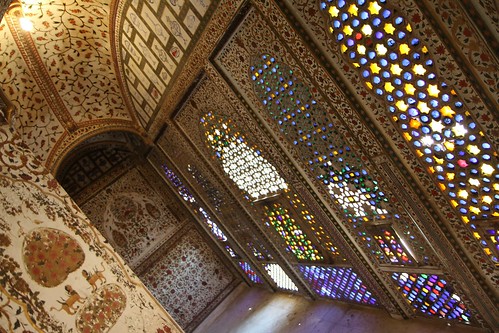
Dungar Nivas
Dungar Singh later on adopted his brother Ganga Singh to be his successor.

Ceiling, Dungar Nivas
Lal Nivas
This is one of the oldest palaces in the fort, dating to 1595.
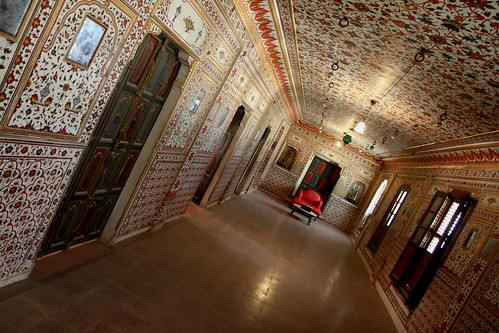
Lal Niwas
The walls and ceiling are decorated with floral motifs in red and gold.
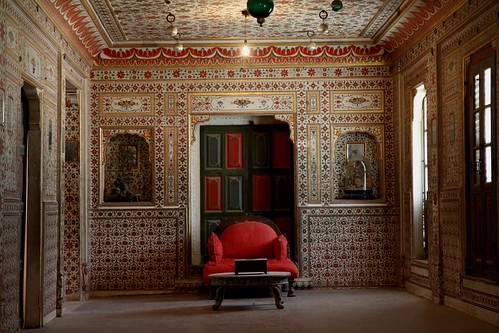
Lal Niwas
Darbar Hall
This hall served as the Hall of Private Audiences where only distinguished guests were allowed to enter and meet the Maharaja.
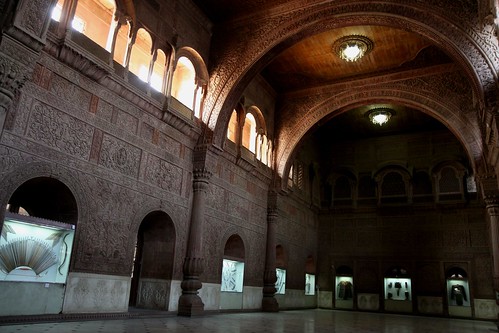
Darbar Hall
The throne, made of sandalwood, belonged to the kings of Kanauj. It was brought to Bikaner by Rao Bika from Jodhpur.
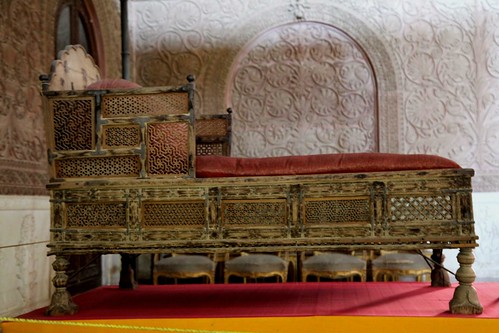
Darbar Hall


What absolutely beautiful pictures!! I hope to one day make it to India to visit this place!
Hi Gaby,
Thanks for stopping by.
Yeah … Rajasthan is awesome !!!
Get in to touch with us whenever you are ready and we can plan out a customized itinerary for you.
Cheers,
Madhu